September 1964 Aikido Seminar at Andrews Gym in Hilo Hawaii
Second Row: Meyer Goo, left, seated next to Sadao Yoshioka
Front Row: Koichi Tohei, Yukiso Yamamoto, Gyokuei Matsuura, Yorio Wakatake
Aikido arrived in Hawaii with Koichi Tohei in 1953, its first expansion to the United States after the war. One of the students that Koichi Tohei attracted in his trips to the Hawaiian islands was the young Meyer Goo.
After a period of rapid growth, spearheaded by Tohei in frequent trips from Japan, Aikido Founder Morihei Ueshiba O-Sensei arrived in 1961 to dedicate the Honolulu Aiki Dojo, the first Dojo outside of Japan built specifically for Aikido.
Koichi Tohei had warned Meyer Goo (who was something of a fighter) not to try and take ukemi for the Founder. Meyer, wanting to feel the Founder’s power for himself, ignored the warning and stepped up anyway – that story of Meyer’s experience with O-Sensei will appear in a future article.
Still actively teaching today in his 90’s after hip replacement surgery, Meyer Goo sensei became a seminal figure in the establishment of Aikido in the United States.
He helped to establish Aikido in New York before the New York Aikikai ever existed, along with Virginia Mayhew, Eddie Hagihara and Ralph Glanstein. Ralph, who would later teach at the Windward Aikido Club, decided to follow Meyer back to Hawaii in 1963, ten days after he told him “Hey kiddo, you oughtta come to Hawaii. We got great teachers there. We got all the good ones.”.
Later on, Meyer’s remarks to Bernie Lau (the first Haole to train in Aikido in Hawaii) would start Bernie, and subsequently Stan Pranin, down the road to an investigation of Sokaku Takeda and Daito-ryu Aiki-jujutsu (from “Aikido: Seattle Aikijujutsu Pioneer Bernie Lau“):
So Lau began collecting old photos. This led him to an exchange of letters and ideas with the San Diego-based martial arts instructor Fred Lovret. During the mid-1960s, Meyer Goo had mentioned a turn-of-the-century Japanese martial art teacher named Sokaku Takeda, who was whispered to have been a teacher of Morihei Ueshiba. The Aikikai downplayed this story, but it was persistent. So when Lovret said, “Oh yes, that story is true,” and then gave Lau an address for Takeda’s son Tokimune, Lau immediately wrote Takeda a letter. And, via the sneaky policeman’s trick of including a $50 bill in the envelope, he even got a detailed, helpful, response.
His research also led him to Don Angier, an aikijujutsu instructor from Long Beach, California, and to aikido researcher and journalist Stan Pranin. In 1985, Pranin met with Tokimune Takeda in Hokkaido, and there became convinced that there was a connection between aikido and Daito-ryu aikijujutsu. A few years later, Pranin spent several days visiting Lau at his house. After looking at Lau’s pictures of Sokaku Takeda and other turn-of-the-century aikijujutsu practitioners, Pranin said, “Can I get copies of these?” As a result, many of Lau’s pictures have appeared in Aikido Journal over the years.
In November 2012 Meyer Goo attended the Kona, Hawaii “Internal training, Aiki and Empowering Aikido” with Dan Harden that was hosted by Aiki Kai O Kona.
Meyer Goo and Dan Harden in Kona, Hawaii – November 2012
Here’s what he said to Dan at that workshop – “Thank you, I never thought that I would feel Ueshiba Sensei’s power again. What you are doing is very important. Don’t stop. No matter what they say.”.
When told that some people believe that the material covered at the workshops is unrelated to Aikido, Meyer Goo’s answer was short and to the point – “Who are these people, did they train with Ueshiba Sensei?”.
In December 2013 Goo sensei attended a second of Dan’s workshops, and also taught a short mini-class at the Kona workshop. Two reviews from the December 2013 workshops appear below, one from the Honolulu workshop and one from the Kona workshop. Enjoy!
Dan Harden and Jamie Yugawa in Kona Hawaii, December 2013
“After all the investigation, all the technique doesn’t matter! Only if the feeling is right.”
– John Coltrane
“A Chimpanzee could learn what I do physically. But it goes way beyond that. When you play, you play life.”
– Jaco Pastorius
“Aiki: A Definition of Freedom”
A review of the December 2013 workshop “Internal training, Aiki and Empowering Aikido” with Dan Harden in Kona, Hawaii
by Jamie Yugawa – Hilo, Hawaii.
‘What is freedom?’ was the question I asked myself at the end of this weekend’s Kona seminar with Dan Harden. This was my 2nd seminar with Dan on the Big Island. My head was reeling from information overload and the weight of putting time into these solo exercises. We, the seminar’s participants, by signing up for the seminar are under a non-contractual obligation to delve deeper and burn this training into our core being. I can attest that we all will do our best to train this unorthodox means of self expression. I stood amongst many different martial artists this past weekend. Different affiliated Aikido school participants, Mixed Martial Artists, Judokas, and even non martial artists. What would bring all these people from different backgrounds and training methodologies together to train? My answer, plain and simple, is learning freedom.
Freedom is the ultimate goal for any artist. Remember the term ‘martial artist’? ‘Martial’ as defined as ‘of or appropriate to war’ and ‘artist’ defined as ‘a person who practices or is skilled in an art’. Thus, a person who expresses themselves through physical movement in a martial fashion. How many of us actually fit this moniker? Or perhaps we fall into one category and do not fit the other. A beautiful movement flowing and such, with emphasis on harmonizing with another person devoid of martial content. Or a form of pugilism with intent to destroy the opponent at any means through predetermined forms. Of course these are just examples and may not fit every single martial art out there. The point I wanted to make was in all honestly the small group we had in Kona last weekend was learning from a true ‘martial artist’.
The man in question is without a doubt a martial artist. A person who can manifest complete spontaneous freedom of movement at the same time fit into any mold presented. The Aiki body or integrated body from years of tanren training were shown to fit Chinese martial arts, Aikido, Wrestling, MMA, BJJ and other examples. The years of dedicated training were being presented in a manner that left all of us in disbelief. The effects on the body are very noticeable. The Aiki body feels like flexible steel. The is no slack in the body upon touch. There is no noticeable muscular strength or tension. Strong and compelling yet ghostly at the same time. Not overpowering yet an irresistible movement. From the moment of first contact, you realize that it is over. Instant kuzushi and you are on the floor or at the end of a very limb clinging on to dear life. This integrated body is a superior form of training without peer. The myth of the unbeatable, invulnerable warrior is a factual reality. It is also attainable by us mere mortals.
So what is the definition of this ‘freedom’ I am talking about? It is honestly expressing the human body without hindrance or limitations. By hindrance I mean when we train, we practice with a partner who engages us in an attack of some kind. A grab, hold, punch or something to initiate an attack. In the case of this seminar, every single attack was of no consequence. There was nothing any of us could do to be a threat to him at all. I will repeat that ….nothing. His movements were completely free, devoid of any conflict. He escaped easily from BJJ holds and then showed how to enhance them using correct internal power. Broke balance and attacked easily during push hands. Showed how the body could move more effectively during Aikido. The end results were quite devastating and effective. This is way beyond waza or technique. The integrated body enhanced each movement easily and effectively. There was absolutely no resistance of any kind on our end that we could show to counter the movements. We could not stop him at all in any manner possible. It was a humbling experience and highlighted the reality of the modern budo arts. Arm bars, Aikido techniques, judo moves were rendered null, then shown with great effect how the Aiki body enhances them.
The funny thing is that Dan is associated with Aikido. Aikido??? The image of Aikido often brings forth a preconception of a soft, cooperative martial art. This was not the case in the hands of Morihei Ueshiba, the founder of Aikido. He was known as a very tough budo man. A veteran of the Russo Japanese war who had killed in close combat. A seasoned martial artist. A very powerful, deadly martial artist. How did this gentleman become so powerful? Aiki. This term Aiki is such a loaded word. It has taken on many meanings and ideas. It brings forth images of harmony and peace. Some say its is a harmonization between you and your partner. In actuality, the meaning is simple. Harmonize the forces inside of you to free movement and connect the body. The term In and Yo also known as Yin and Yang are forces inside of you that are manipulated to create this body. The results are powerful and effective. This is what Aikido was and should be. ‘Modern Aikido’ is honestly just a shell of what Morihei Ueshiba’s vision of what a martial art should be. This is the missing piece that many of us have been searching for. One senior participant, a long time martial artist in his 90’s who felt O Sensei during his 1961 visit, declared this man to be the closest he has seen to O Sensei…..ever. I heard that with my own ears.
Dan Harden and Meyer Goo in Kona, Hawaii – December 2013
In essence, the Aiki – connected body is equivalent to high level jazz. A physical manifestation of saxophonist John Coltrane’s ‘Giant Steps’. The movement equivalent of the late virtuoso Jaco Pastorius’s interpretation of ‘Donna Lee’. The integrated body breaks the limits of the human body and mind. By learning the rules and practicing, eventually one can throw away the rule book to express oneself honestly and free. There will be hours of practice and frustration but the end result is worth it. No matter what time change or key, the music is beautiful and exact. Another epiphany during the seminar was another meaning of freedom. When you strip away rank, status, money and organization all there is left is ability. Without these trappings impeding ability, your perceptions become unlimited and the path becomes clear. Ability is the only attribute of worth in the long run. In the end all there is a tough, lonely road with a beautiful sunset waiting for you on the other side. For myself and others who see the value this road is the only path. You just have to take the first step- which is the hardest.
One last thought. For the naysayers and critics that don’t see the value in this- that’s alright. If you feel there is value in what you are doing and you feel you don’t need anything else, so be it. This road is not for everyone. Every single one of us took a chance to see what this was all about, and we did it with an open mind. We all were rewarded with meeting a wonderful person and receiving a gift beyond value. Maybe you can’t see what we see. Or honestly….maybe you shouldn’t.
Scott Burke loads up on Dan Harden at the Oahu Workshop
一点の気 (無) から陰陽の2つの気に分かれ, 陰陽の気は交流して万物を産み出すのである。
A spot of Ki (Nothing) is divided into two Kis – positive and negative. The dual Kis interact and give birth to all things in the universe.
– Ueshiba Morihei, Traditional Aikido vol 5 p 36
(口伝) 胴 (腰)の動きは両足にあり、頭の動きは両手にあり。
The rotation of the hips determines the movement of both feet. The movement of the head determines the movement of both hands.
– Ueshiba Morihei, Traditional Aikido, vol 1 p49
(口伝) 腰 (胴)の動きは両足にあり、頭の動きは両手にあり。
The hips determine the movement of both feet. The head determines the movement of both hands.
– Ueshiba Morihei, Traditional Aikido, vol 4 pp 118-119
Thoughts on the December Hawaii Internal Power Seminar and the future of Aikido
By Scott Burke – Fukuoka, Japan
(this review originally appeared on AikiWeb, and appears with the permission of Scott Burke)
I’ve had a few days to recover from the Jet lag, coach seating (oy my shoulders and knees!), and the shock of returning to cold Japan from sunny warm Kailua. (Oh cooing doves, how I miss thee). I handed out the omiyage to friends and co-workers, caught up on a few meetings at work, getting back in the groove of things. It’s also taken me this long to begin to collect my thoughts on the experience and the working model of IP and Aiki as taught at the seminar. Now a little personal background. For about, ohh just now 23 years or so I have been training in Aikido. For 19 of those years I have been an Iwama style guy. During that time I’ve devoted quite a large chunk of my life to the art, at one point I quit my job to become an uchi deshi with a high ranking instructor. I’ve turned down opportunites for promotion at work in order to keep up my training schedule at the old dojo. I’ve taken ukemi from a bunch of the big boys. I was once violently assaulted on the street and successfully defended myself against my attacker using solely Aikido (kokyu ho of all things, guy never saw it coming). And once, yes, I did walk four miles uphill in the snow just to get to the dojo. Well, maybe it was three and a half miles, but you get the point. I’m kind of an Iwamaniac.
So, now to the nitty gritty. Given all that, what did I think of the seminar and this whole IP deal? Well… as I’ve explained, I’ve been training for 23 years or so. I’m 41 now. So, for more than half of my life I’ve been doing this art and for just under half I’ve been in Iwama style exclusively.
Honest opinion: I learned more about Aikido this past weekend than I have in all of my 23 years of practice. Being given access to this training model is simply transcendental. There is no other way to say it, this is Takemusu Aikido. And, it DOES NOT negate that which I already know, it does not negate the legacy of Saito Sensei and my years in the Iwama tradition, in fact it illuminates all of it in such a way as to show us how we should be training. This is the power we’ve been seeking for years but could never achieve, no matter how hard we pushed ourselves in training or how much sciatic nerve crushing ukemi we took. IP is everything we got into Aikido for in the first place, it can be supremely soft and just stunningly devastating in the same moment. To put it another way, “This. F***ing. Rules!”
The Hawaii guys jokingly refer to their training location in the park as Area 51. An apt description, it seems to me. We’ve had the proverbial Aikido UFO up on blocks in a bunker for years. One Aikido lineage has the alien bodies in a tank at Hangar 18, another is making velcro and superconductors from the reverse engineered wreckage, and yet nobody knew what made that sucker fly. Well, IP is the reactor and now we can take that Aikido UFO out for a spin. Did I mention that I suck at metaphors?
So much of what we do in Aikido makes sense in light of traditional IP/Aiki training. So much so that it’s hard to pick a starting point. Well, I suppose we could start by reading our own text books. Saito Sensei’s Traditional Aikido series contains a plethora of information that pertains directly to IP, and yet I’ve never once, ONCE, heard a teacher explain it in as cogent a manner as was done in the seminar, much less talk about its existence. There is far more in those books than just the pictures and yet, that’s precisely how we’ve been using them. Step by step picture guides for gross physical movement. That’s a start, but the words, the real content… what do they mean, how does that drive what we do? This is bloody important! We’ve got a lot of work to do.
And it’s not just reading the English translation either. Some of that stuff, it seriously needs a second pass by a translator who knows not just the traditional IP terminology (Chris Li I’m looking at you! I mean surely we can do better than “Body Exercises and their Unlimited Ramifications” for 体術その無限の展開. It makes it sound like one’s chances of getting into a good school are ruined unless you meet the fitness requirement.) That’s just one thing, but here’s the quote that got me started on my whole “What is this IP noise and how does it jibe with what we’re told to do?” quest.
Here’s the English translation of a kuden, an orally bequeathed teaching mind you from O’Sensei himself, from Vol 1 of Traditional Aikido, describing Kamae for taijutsu and bukiwaza. “The rotation of the hips determines the movement of both feet. The movement of the head determines the movement of both hands.” Okay, I’ll follow you there, the first part sounds exactly like what we’ve been told how to train. Except that the Japanese text doesn’t say that. It doesn’t say rotate at all, it says movement, 動き . The movement of the hips determines the movement of the feet.
But wait, O’Sensei’s kuden uses the word Dou, 胴, the trunk, upper body, or torso. The movement of the trunk determines the movement of the feet. Hips, koshi, 腰 , is in parenthesis next to dou. So it should be taken as a qualifier for dou. (The second appearance of this kuden in Vol 4 of the series has a different translation and somehow koshi takes precedence and dou is now in parenthesis. I guess the kuden are kind of flexible, zing!). Now Japanese regional anatomical terms can be frustratingly indeterminate. Ashi can mean foot, or calf, or leg, there are separate kanji for these with the same pronunciation, and the Japanese will use them in print to differentiate between foot and leg. Orally, one can grasp the meaning from context, tone, or nuance in the voice. So to impart the nuance in print, we see the use of dou and koshi in parenthesis to indicate what section of the body moves the legs.
What is koshi? Well, that depends. Most westerners say hips and pat their pelvis to indicate their hips, so move your hips. Check, got it, we do that. (Funny side note about hips here in Japan, the English word hip is used to mean the buttocks, which can lead to all sorts of funny situations where everyone becomes embarrassed and giggles uncontrollably. Can’t open the door, put your hip into it, hilarity ensues. But I digress.) What about koshi as the Japanese commonly use it? I’ve gotten a lot of different answers from a lot of native Japanese. It could mean anything from the loins, to the pelvis, to the sacrum, to the waist. Just like ashi, things get fuzzy. So let’s find the overlap. Dou, trunk of the body, what part of the trunk? The koshi. And where does that overlap, in English? How about the waist? The movement of the legs is determined by the waist. What possible driver could there be for power at the waist?… And what of the head determining the movement of the hands? Why, it’s almost as if there would have to be, oh I don’t know, something attached to the head that could determine the movement of the hands? What could that be?… Sorry to be a tease but you’ll have to take a seminar to find out.
The clincher for me, that one moment that really made me go, “Yeah this is it!” was an answer to a nagging little question (actually kind of a BIG question) about Aikido training and efficacy, in just about every style or group I’ve trained with, Iwama included, that has always bugged the hell out of me. The age old newbie question in response to a technique against a grab. “Why not just let go?”
My learned response/answer over the years has always been, say it with me now, “Because you’re giving a serious attack.” I have held on so many, many times over the years as uke, well past the point where my hand would naturally open or when I’m in such a contorted position that holding on is ridiculous given that I could just let go and punch my partner. I’ve thought about this conundrum while holding on to Shihan mind you, (I could just let go right now but that’d be wrong) and I’ve even seen Shihan change out uke for ones who don’t let go during techniques. Check out Youtube, it’s all over the place.
The answer to “Why not just let go?” after the IP/Aiki seminar. “Well, I couldn’t.” All my grabs became attraction points, Yin and Yang (the 2 kis from the headliner quote) were made manifest and that’s all she wrote. My hands were glued to the instructor and I could not, for the life of me, get them off of him. And I tried. Never have I had that happen. Just, stuck to nage and then tossed like a pie in the oven. Now, go back and look at those photos, look at the waza O’Sensei is doing, look at the waza Saito is doing. Why can’t the uke let go? What are we doing? What do we need to do?
Well, metaphorically speaking, we’re going to have to smile wistfully at the old homestead and do some remodeling. Tear out the old wiring there in the wall, it’s a fire hazard. And the old land line’s gotta go, install some T3 cable up in there, that’s gonna cost ya. Got some asbestos up on the second floor, so you won’t be staying up there for, oh, a long while now. Plumbing’s gonna have to get ripped out, new marble countertops, mahogany rails get refurbished, chandelier’s a loss, strip out the lead paint, oh and you’ll need an exorcist because the closet is haunted. Let’s face it, with all of that and the roof work the place is going to be pretty darn unlivable for a while….BUT! But, after all of that. Your house is going to be in great shape. Comfortable to live in and everything you’ve always wanted. The envy of all your nosy neighbors, and a welcome place for friends, family, and strangers alike. Worthy of the name AIKIDO. It’ll take time, effort, patience. Pain. Intent. And humility. But all of that will be worth it. It is well past time to stop living in the shell of what this once great mansion has become. We’ve got to take command and restore this Noble House back to its glory days. The traditional methods of IP and Aiki development now openly available for the asking, is the way to do this. This work has been around for a long, long time and finally it is within reach. For more than half my life I’ve been seeking this.
To quote the great water engineer William Mulholland. “There it is. Take it!”
Published by: Christopher Li – Honolulu, HI

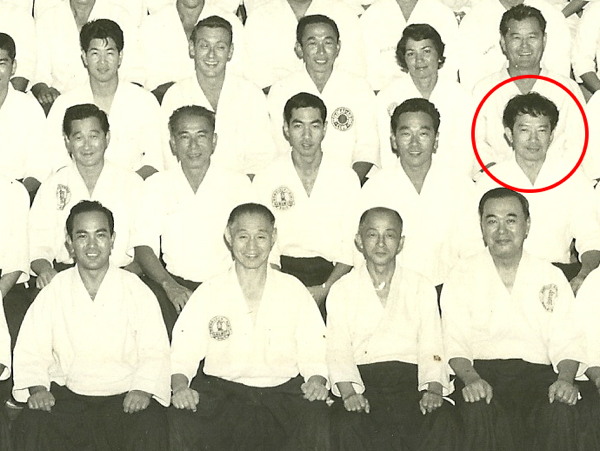
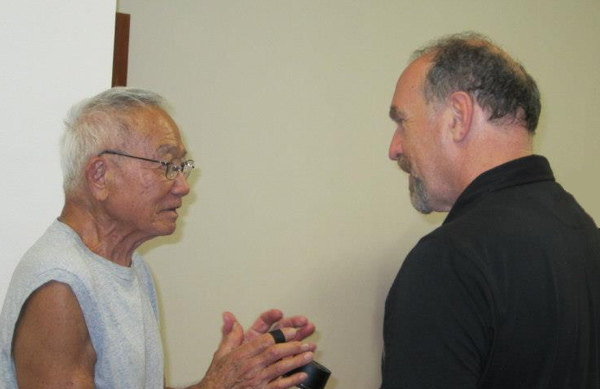
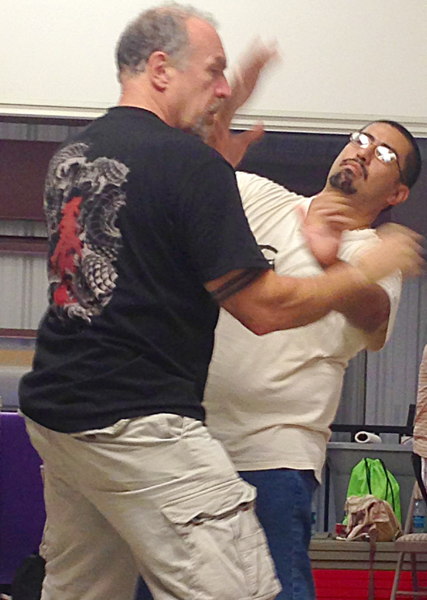
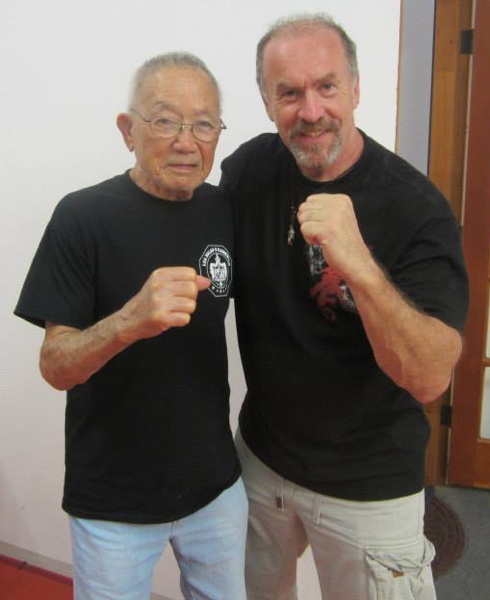
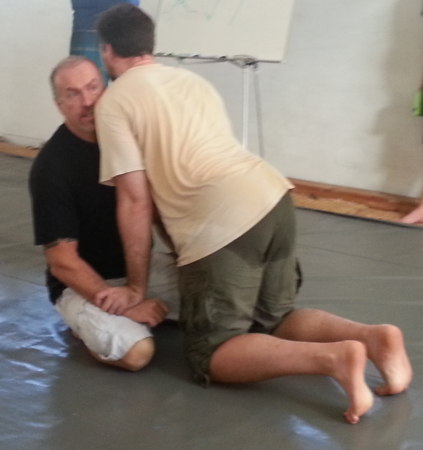

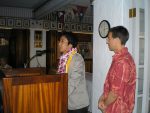


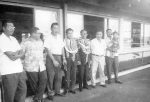
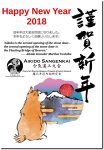
Leave a Reply